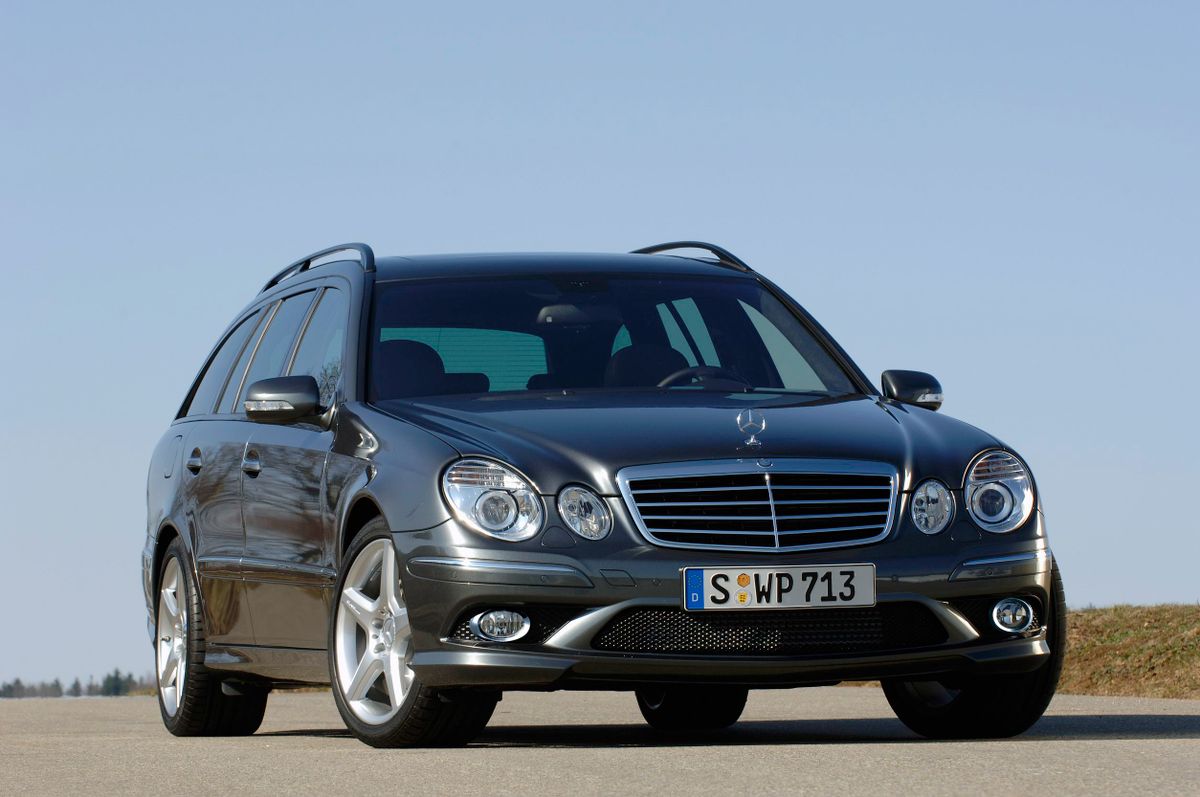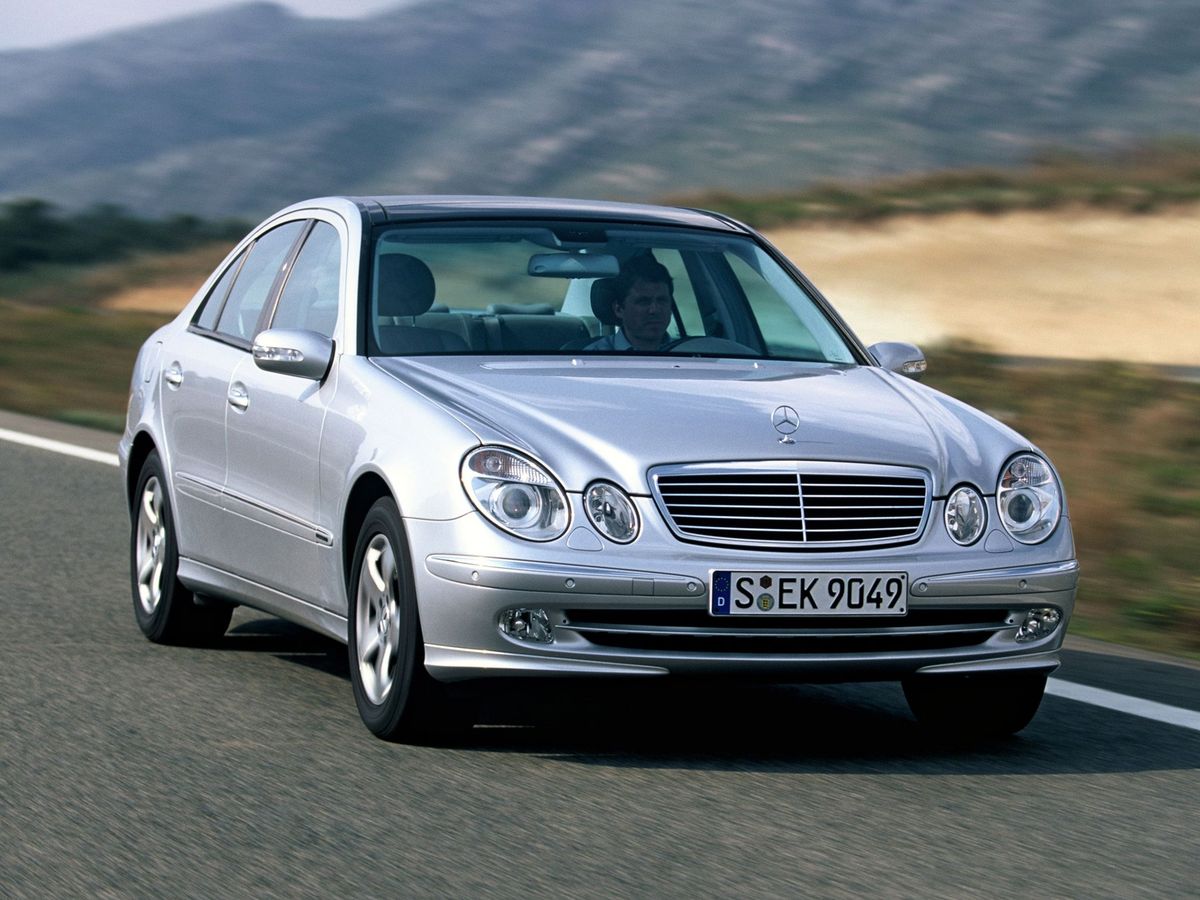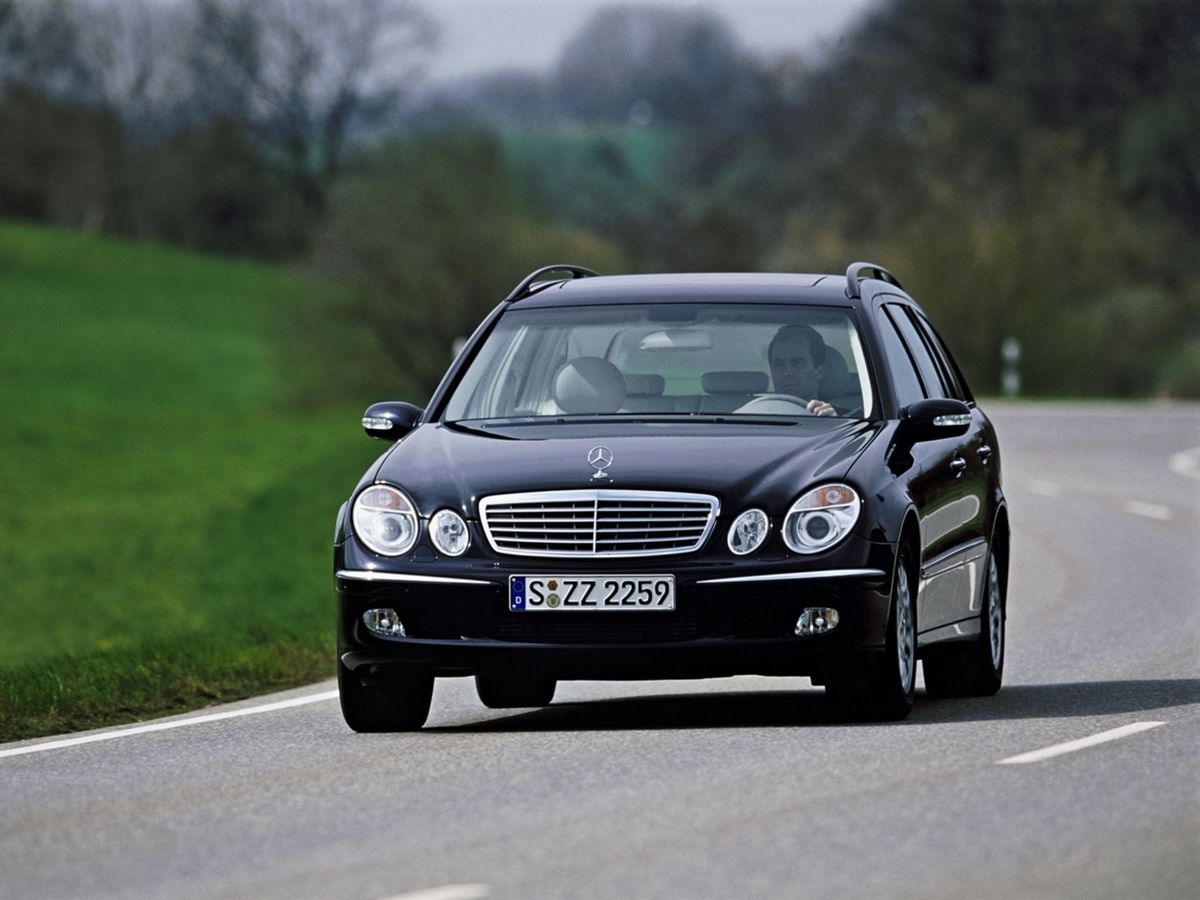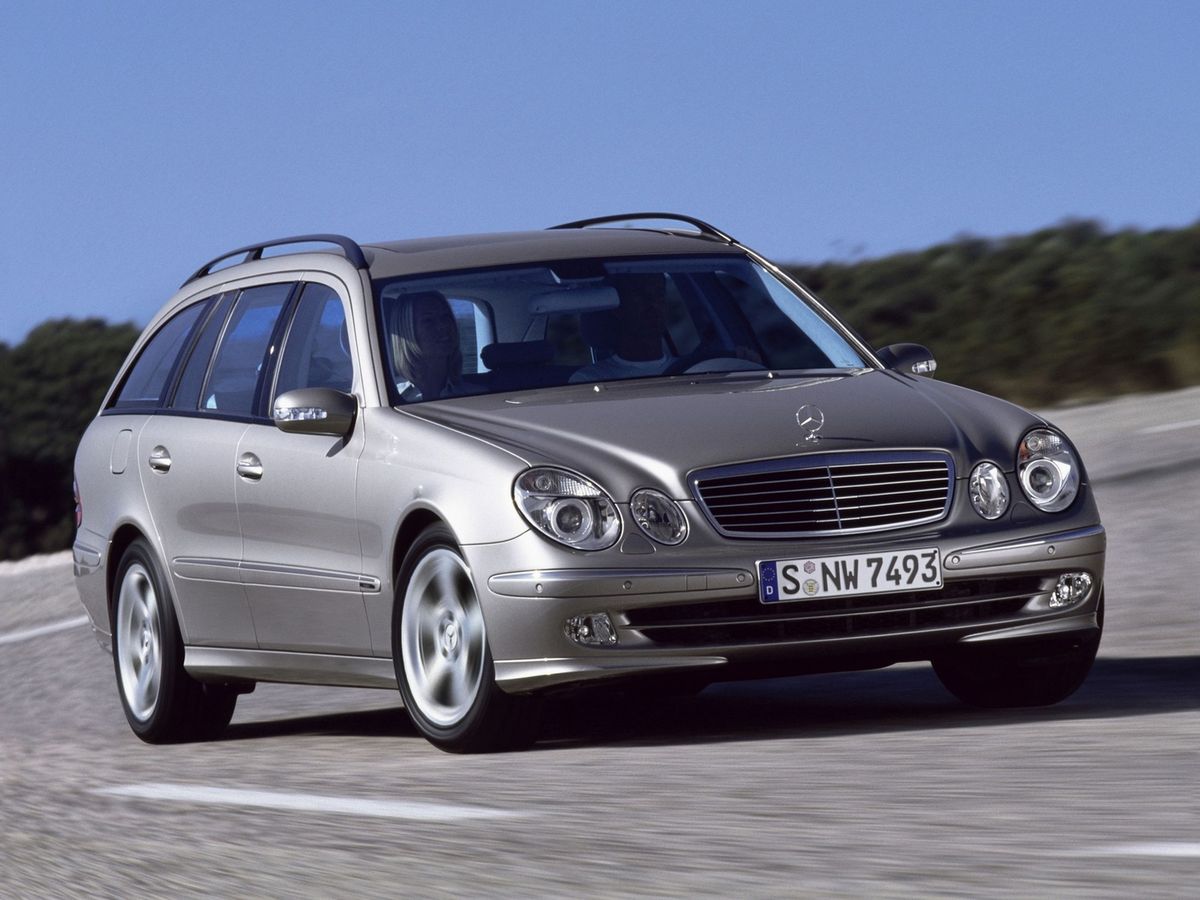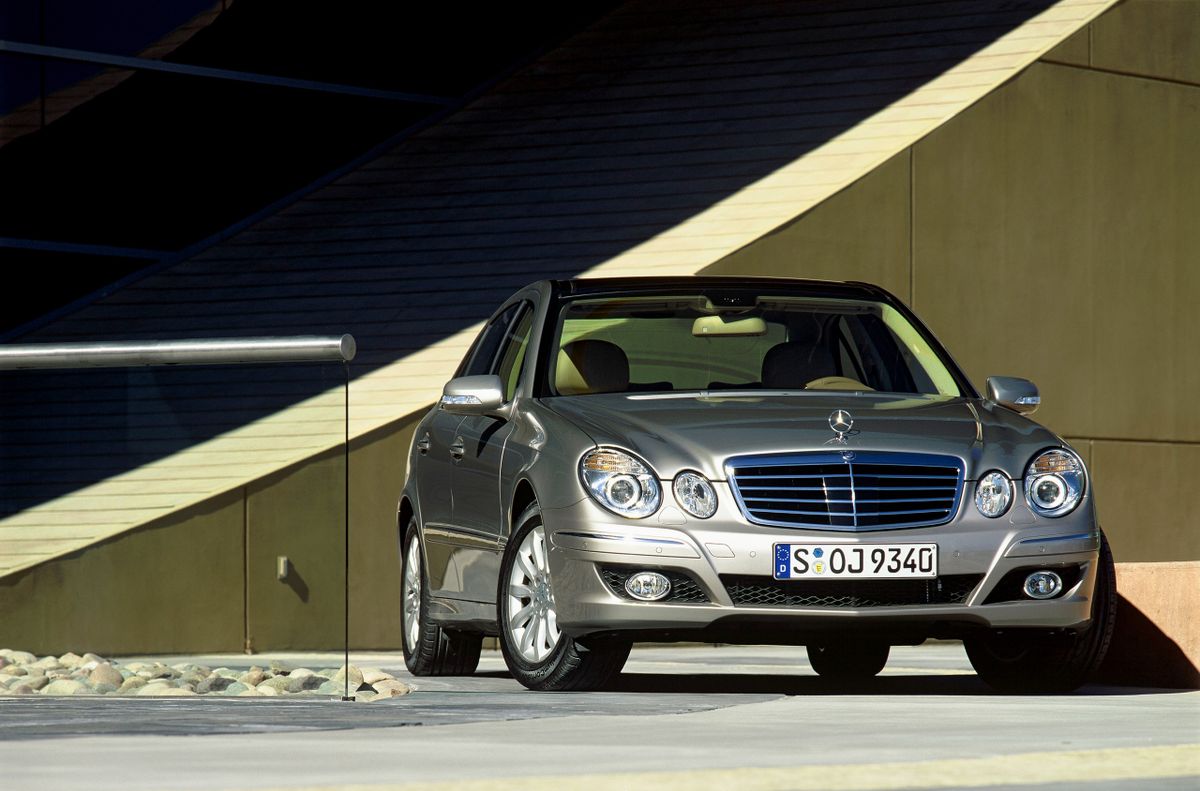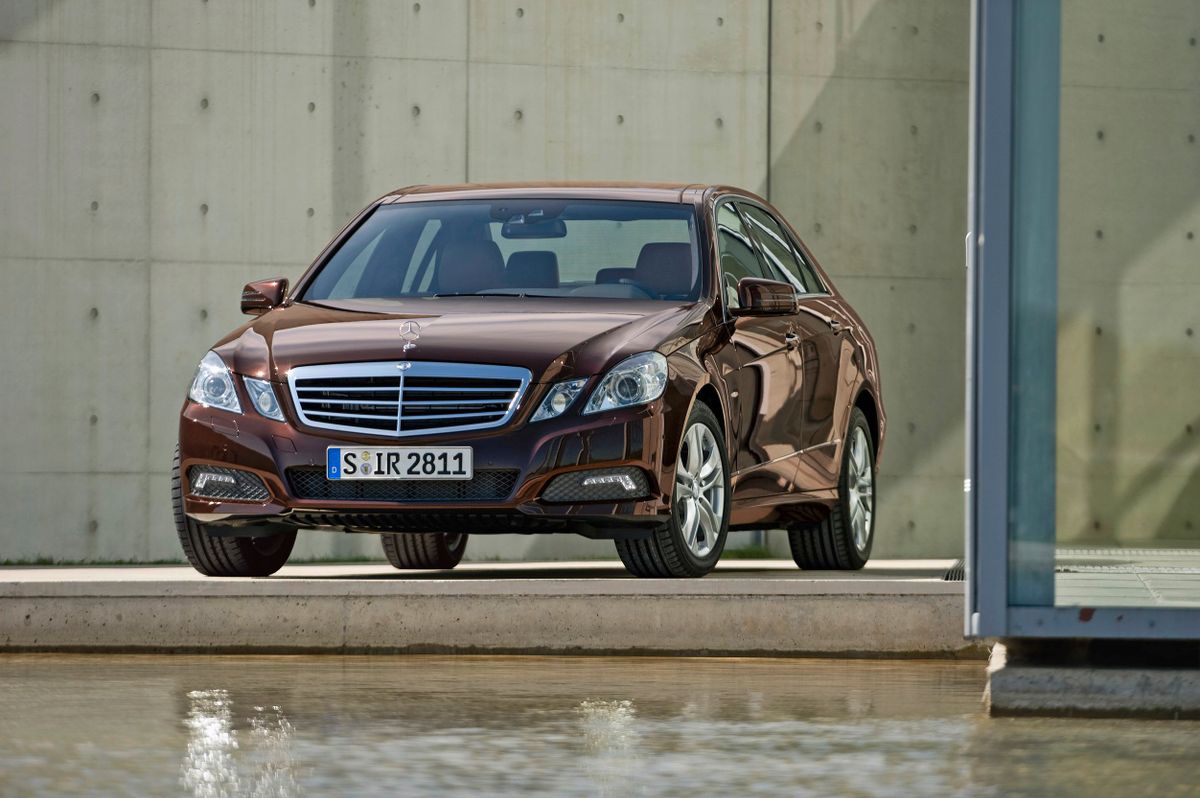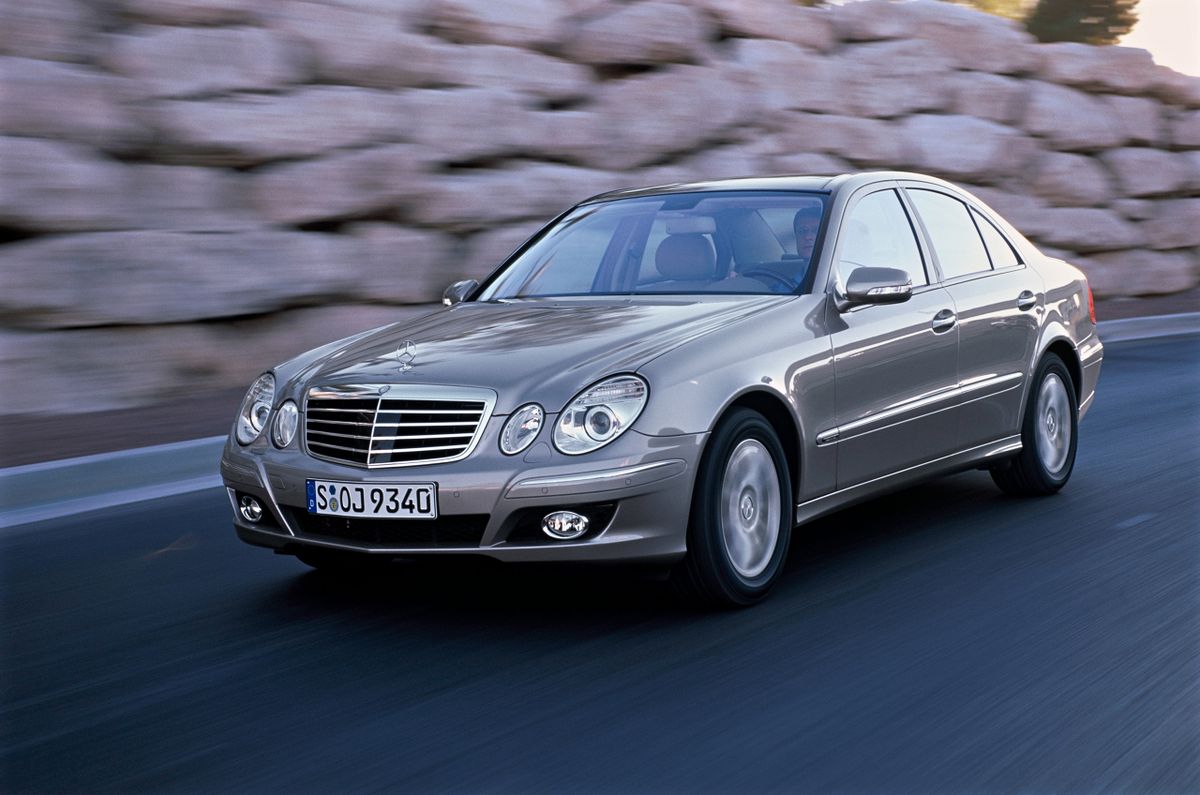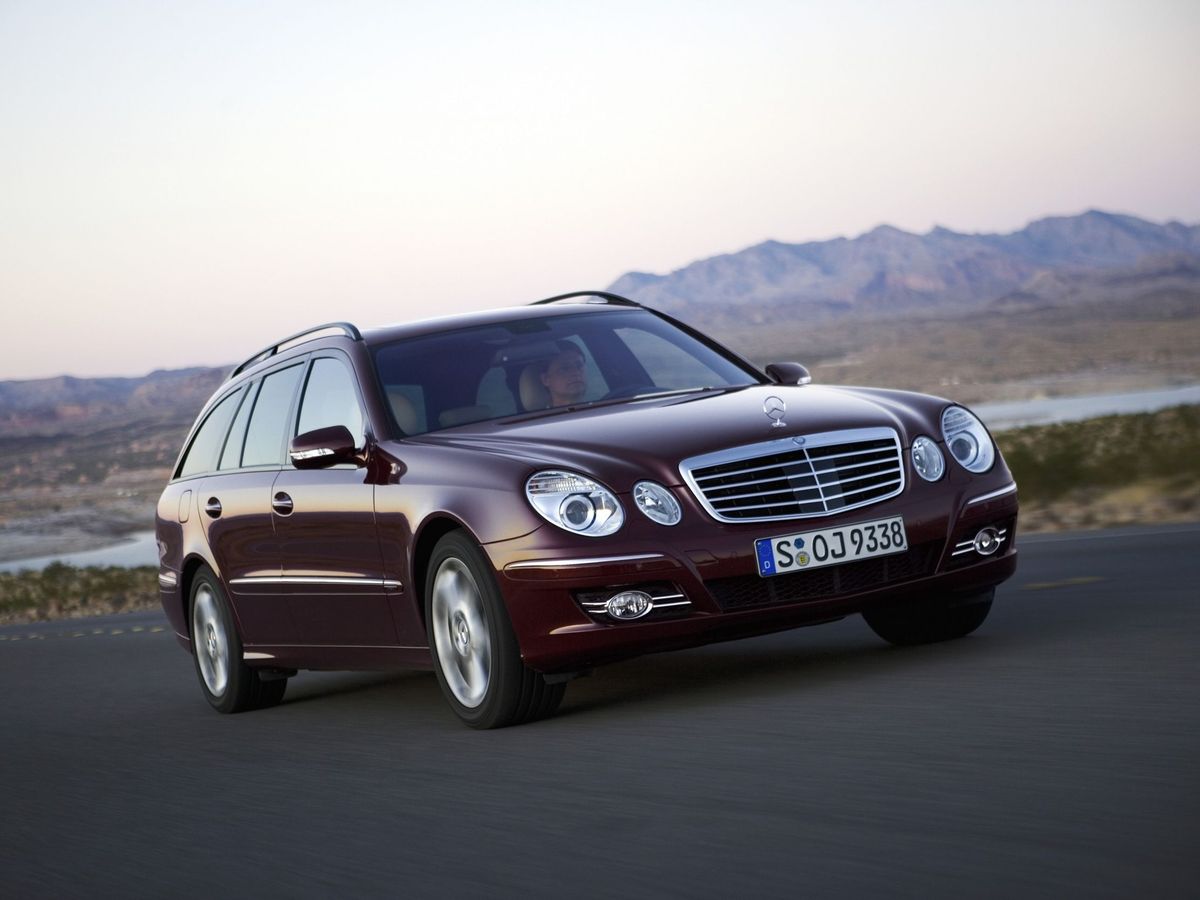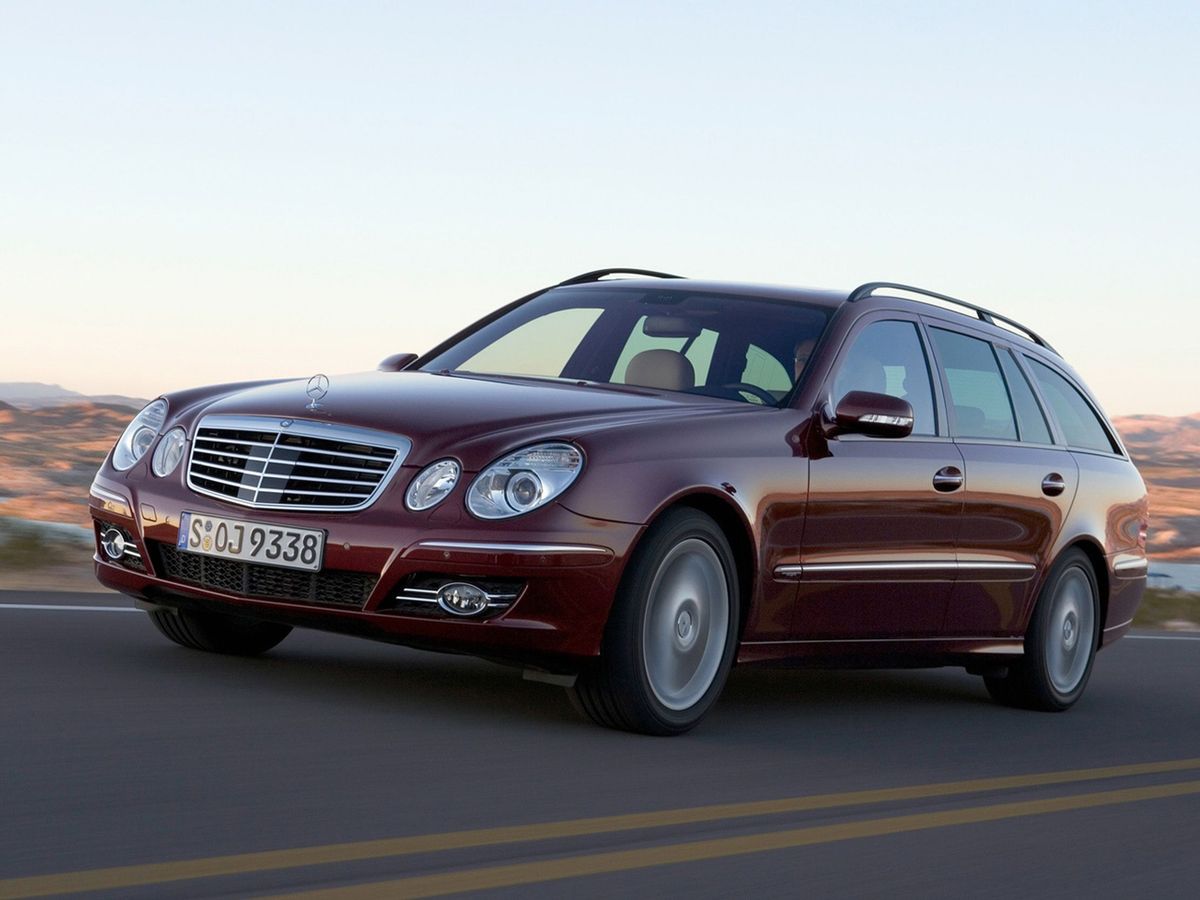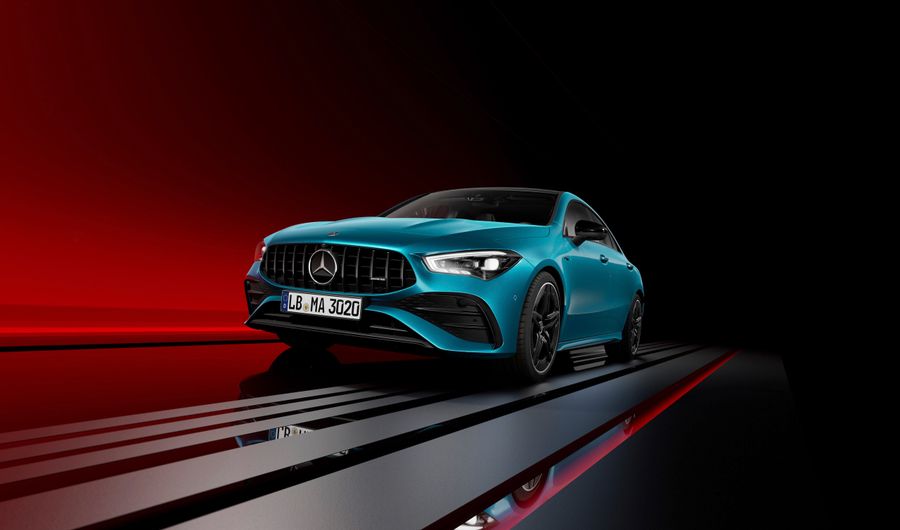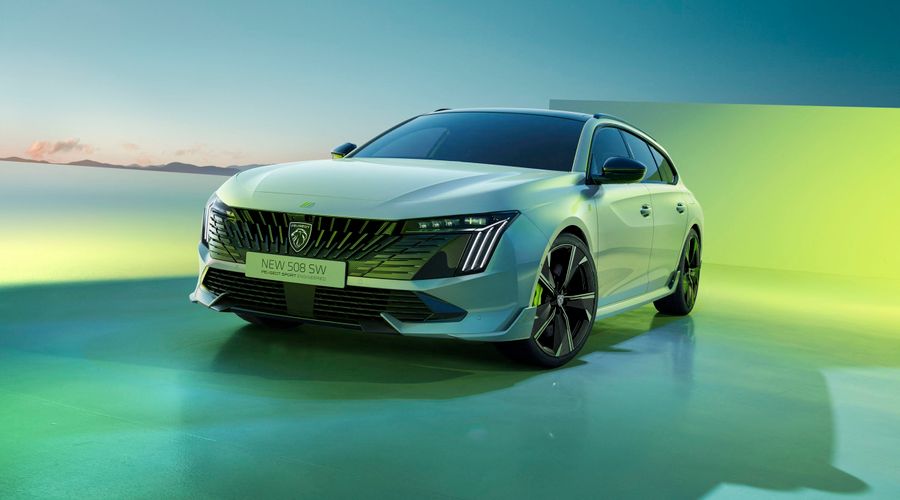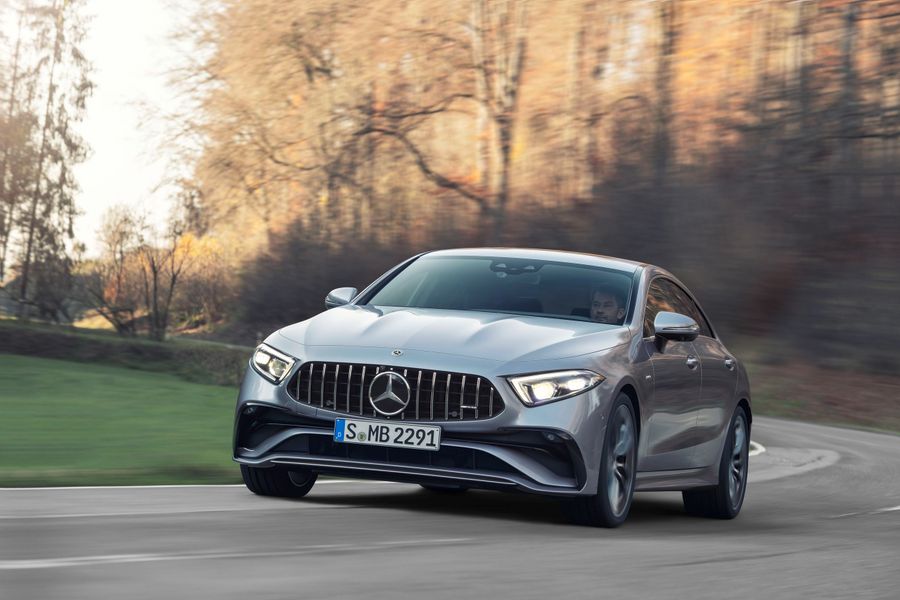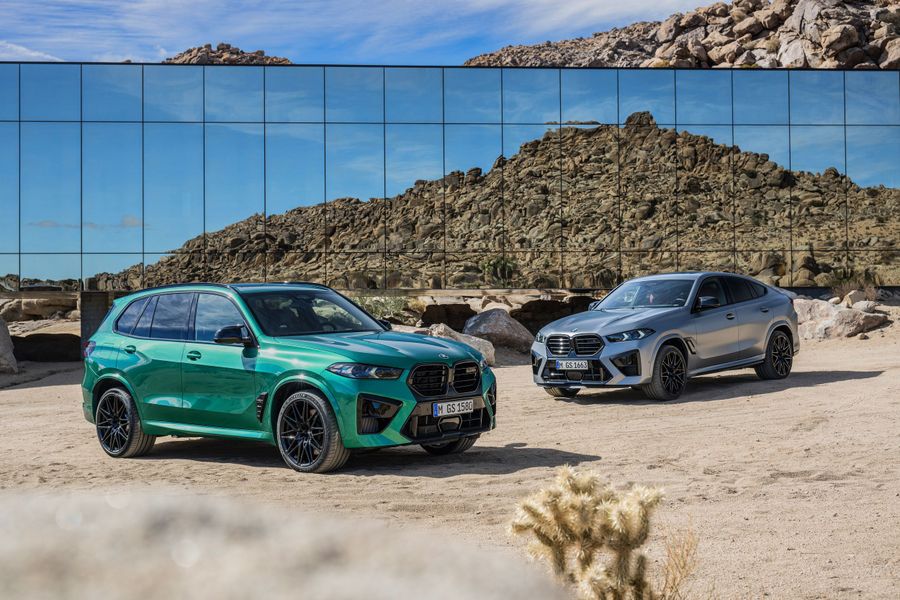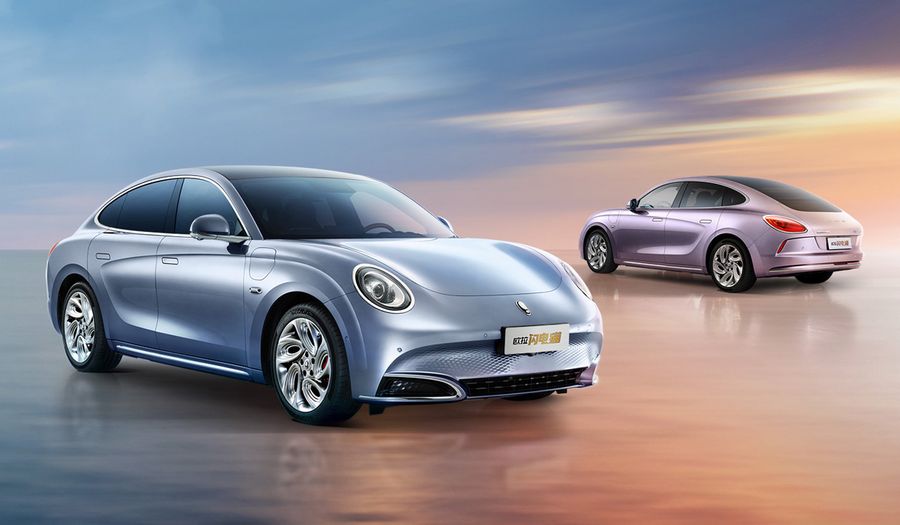
‘Big-eyed’ model for the Men in Black
In June 2001, a German tourist saw a 3rd generation Mercedes E-Class on the set of Men in Black 2 that was carefully hidden from the public eye. Let’s recall that the cult blockbuster featured the W211 car as a regular vehicle used by agents Jay and Kay. The savvy tourist sold the pictures to Auto Zeitung magazine, which caused a very loud scandal in the automotive world, so the date of the official presentation of the car was postponed from March 2002 to January 2002, when the Mercedes W211 was presented at the Brussels Motor Show.
New E-Class
The manufacturer started developing a replacement for the Mercedes-Benz W210 in 1997. The main parameters of the new model were determined in 1999. The prototype was built in 2000, and the pilot launch and tests of the production version took place in 2001. The development of the W211 cost 2 billion euros. The new E-Class was presented in the following three versions: Classic, Elegance and Avantgarde:
- Classic is a basic version: 16-inch wheels, fine wood trim, climate control, six airbags, heated windows and mirrors, an audio system and an on-board computer.
- Elegance is a more expensive version, especially in terms of the interior design of the model: walnut and chrome trim, leather steering wheel in interior color, and adjustable interior lighting.
- Avantgarde is a sportier version with a spoiler, a rigid 15 mm lowered suspension, 17-inch wheels, LED brake lights and taillights, and aluminum interior trim.
The Mercedes W211 was originally produced as a sedan. An estate version appeared in February 2003, and in 2004, a Mercedes C219 CLS-Class 4-door coupe was designed. The front fenders, hood and trunk lid were made of aluminum, but the body also comprised high-strength materials, so the car became lighter and more durable, as well as more protected against corrosion. Plus, the level of sound insulation of the model is still remembered by oldfags.
Despite the fact that the W211 was still slightly larger than its predecessor (the wheelbase was 22 mm larger), the drag coefficient of the car was slightly reduced to 0.26 (for the W210, it was 0.27).
Compared to the W210, the 211 could boast of a larger trunk that had a volume of 540 liters, which was due to the shape of the fuel tank. The predecessor’s fuel tank was located behind the rear seats and occupied a lot of space. As for the W211, the 70-liter tank was U-shaped and was installed under the seats. The trunk became longer and the rear seat could be folded, thus making it possible to load the E-Class as if it was a pickup truck, as its trunk volume increased to 1,950 liters! The clever body design and the interior as a whole made the car larger and more spacious. The W211 also continued the trend of refusing from Mercedes-Benz’s characteristic boxy, austere body shapes towards smoother, more flowing lines and a more comfortable driving experience. The E-Class design comprised the style mixing elements, for example, the stern of the W211 looked more like the rear of the S-Class model.
Just like the preceding Mercedes W210, the new E-Class model has characteristic large rounded headlights, thus joining (and completing) the original range of the ‘big-eyed’ Mercedes models. As for the famous ‘eyes’, despite looking very similar to the headlights of its predecessor, the headlights of the W211 model are much more technically advanced, at least for their time. The new representative of the E-generation was equipped with the Intelligent Light System, which automatically set the lighting mode depending on road and weather conditions. For example, when driving on the highway, the headlights automatically adapt the beam of light to optimally illuminate the road when driving at speeds of 90 km/h and above and at speeds exceeding 110 km/h. The headlights can also turn to follow the movement of the steering wheel. In the anti-fog mode, the headlights illuminate the roadway as wide as possible at speeds up to 70 km/h to prevent the risk of self-blinding.
Just like the preceding Mercedes W210, the new E-Class model has characteristic large rounded headlights, thus joining (and completing) the original range of the ‘big-eyed’ Mercedes models.
More cool options
Some fans of the good old brutal Mercedes experienced a deep resistance and a severe culture shock when they saw so many different functions and options included in the standard trim level. But the sales numbers showed that the developers were right and worked in line with the general trends of the automotive industry.
Here is the list of equipment installed on the W211: cruise control with sensors on the radiator grille, which automatically estimated the distance to the car ahead, and, if necessary, the system could automatically increase or decrease speed; speed-sensitive steering system; anti-theft alarm system and ultrasonic parking sensors with audible and visual driver warning mechanism; navigation system with 4.9-inch color display; advanced multimedia system and COMAND APS system with 6.5-inch color display and navigation maps of Europe (since 2003). Moreover, the W211 was equipped with a residual heat recovery climate control system and a combined filter, electrically adjustable seats adapting to every person (!) and providing a massage function, ESP, ASR and ABS systems, Sensotronic electro-hydraulic braking system (until 2006), electric side heated mirrors (with memory function!), heat-insulating glasses, rain sensors (!), and much more.
As for the roof, it was standard in the basic trim, but it was possible to order a glass sunroof with a special partition ensuring sunlight protection or an electronic panoramic two-piece glass roof.
Options and functions were modified and supplemented throughout the entire production process… When the W211 appeared in Men in Black II, such additional options as a fake driver retracting into the steering wheel and the flying mode perhaps did not look too supernatural to those who already managed to test all the capabilities available even in the standard version.
Power trains
The W211 was initially equipped with rather powerful six and eight-cylinder engines. The basic and weakest was a petrol E200 NGT engine with a capacity of 163 hp, which allowed the car to accelerate to 100 km in 9 - 10 seconds. In total, depending on the trim level, the W211 could be equipped with 13 types of petrol engines and 11 diesel engines with up to 514 hp (petrol engine, E63 AMG) and up to 314 hp (diesel engine, E420 CDI). By the way, according to the sales results, up to 40% of buyers preferred the W211 diesel versions. The Mercedes-Benz W211 cars were equipped with a 6-speed manual gearbox, as well as 5- and 7-speed automatic gearboxes. The W211 suspension did not contain a large number of aluminum elements. The front and rear independent suspensions were multi-link with stabilizer bars. The eight-cylinder models were equipped with Airmatic DC air suspension.
Restyling
In 2006, the Mercedes W211 underwent a serious restyling. About two thousand changes were made to the base model. First of all, changes were made to the CDI engines, which became more powerful. Plus, the manufacturer refused from the seemingly progressive SBC braking system, replacing it with the standard ABR. The E-Class borrowed the PRE-SAFE, preventive occupant protection system, from the S-Class. The vehicle could also boast of the ADAPTIVE BRAKE system, NECK-PRO crash-active head restraints, flashing brake lights, a tire pressure monitor, modernized headlights, taillights and steering wheel. The design of the side sills, taillights and bumper was also changed.
In this form, the Mercedes W211 was produced until 2009. During the entire production period, more than 1.5 million third-generation E-Class vehicles were sold. And although the W211 was withdrawn from mass production a long time ago, and since then automotive technologies have greatly changed, this ‘big-eyed’ model is still in demand in the secondary market and is respected by car enthusiasts.
Interesting facts
After the restyling in 2006, the manufacturer presented the environmentally friendly and fuel-efficient E320 BlueTEC, E300 BlueTEC and E350 CGI diesel versions. For that time, those diesel engines were one of the most environmentally friendly, and in the USA the W211 E320 BlueTEC version won the World Green Car of the Year Award! Yes, this was possible prior to the era of electric cars.
In 2007, the manufacturer launched a W211 E63 AMG modification with a 6.3-liter naturally aspirated M156 eight-cylinder engine producing 514 hp and a torque of 630 Nm, which allowed the car to accelerate to 100 km in 4.5 seconds. It was the most powerful car in its class at the time.
In 2004, a production version of the gas-powered W211 (E200NGT) was produced. The gas-powered E-Class was presented at the Frankfurt Motor Show in 2003 and at the Leipzig Motor Show in 2004.
Based on the market research results, J.D. Power ranked the W211 first in the 2009 Luxury Car Customer Satisfaction Index.

